Classify past emails as wanted or unwanted and save to Coda
This is a Bardeen playbook. It's a pre-built automation template you can run in one-click to perform a repetitive task. Get started with our free Chrome extension.
Explore other automations
This playbook has been deprecated.
Explore Bardeen's playbook catalog for other automations or build your own.

How does this automation work?
Organizing your inbox can be a daunting task, especially when sorting through a large volume of emails. Bardeen's automation simplifies this process by classifying your past emails as wanted or unwanted, then saving the categorized results directly to a Coda table. By leveraging AI-powered actions and seamless integrations, this workflow helps you maintain a clean and organized inbox, which is vital for personal productivity.
Here's how this workflow simplifies email classification and organization:
- Step 1: Find Emails - Bardeen fetches emails from your Gmail account within the specified date range. This step gathers the data that will be categorized.
- Step 2: Classify Emails - Utilizing Bardeen AI Actions, each email is then classified as 'wanted' or 'unwanted' based on your personal classifier. This AI-driven process ensures accuracy and saves time.
- Step 3: Save to Coda Table - Finally, the classified emails are saved to a table in your Coda document. Coda combines documents and spreadsheets into a flexible workspace, making it a perfect place to organize your email data.
How to run the playbook
Manually sifting through emails within a specified timeframe can be a time-consuming task, particularly when the need to distinguish between important and unwanted messages is paramount. This constant email management struggle can disrupt your workflow and productivity.
This automation is designed to streamline your inbox management. It serves as your virtual assistant, meticulously categorizing emails based on your predetermined criteria. No more laborious sorting, no more inbox clutter.
Whether you're dealing with critical business communications or the perpetual influx of spam, this automation offers a precise solution. Plus, it seamlessly archives the results in a Coda table, ensuring an organized and accessible email repository. Regain control of your inbox effortlessly with this automation.
Let’s set it up!
Step 1: Create a Coda table
The first step is to create a Coda table with the email information you want to save.

Bardeen will extract information from your emails like subject line, sender, date, link to email, labels and pair them with the information from your classifier, once your setup is complete.
Step 2: Install the extension and map the information to Coda
You will be redirected to install the browser extension when you run it for the first time. Bardeen will also prompt you to integrate Coda.
Click the “Pin it” button at the top of this page to get this automation saved to your Playbooks.
Activate Bardeen (or hit Option + B on Mac or ALT + B on PC on your keyboard) and click on the playbook card. The setup flow will start.
Bardeen will then prompt you to modify your email classifier. You can choose an existing one or create a new classifier with criteria for your emails.
After you click “customize classifier”, Bardeen’s classifier configuration will launch. You will be asked questions about the emails you want to keep. Answer in as much detail as possible. This will ensure that the classifier is more accurate.
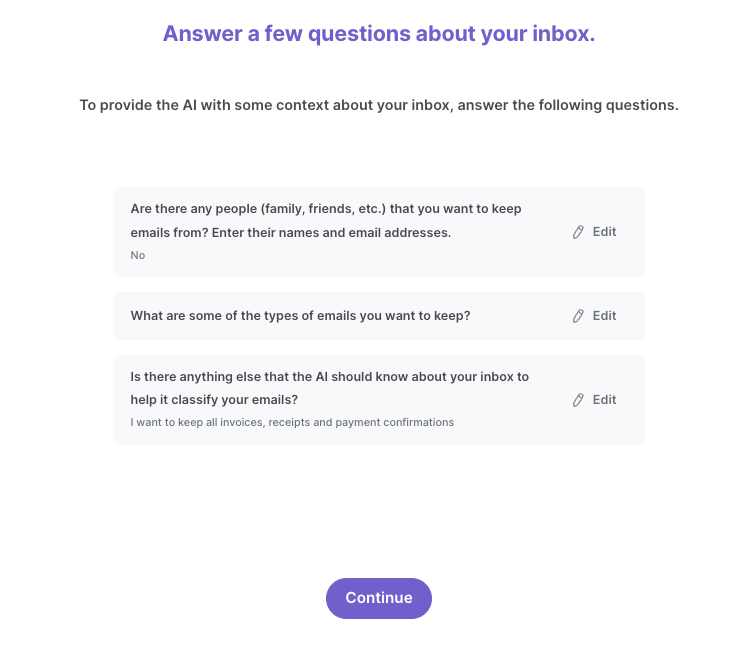
After you answer your questions, Bardeen will request that you create your categories. Your emails will be classified based on your categories and descriptions here. For example, I entered “Emails with Invoice” as a category and added a description. Emails that fit that description will be categorized as “Emails with Invoice” and any other emails will be categorized as “unwanted”.

Finally, we recommend that you train your classifier with sample emails to increase accuracy of the results.
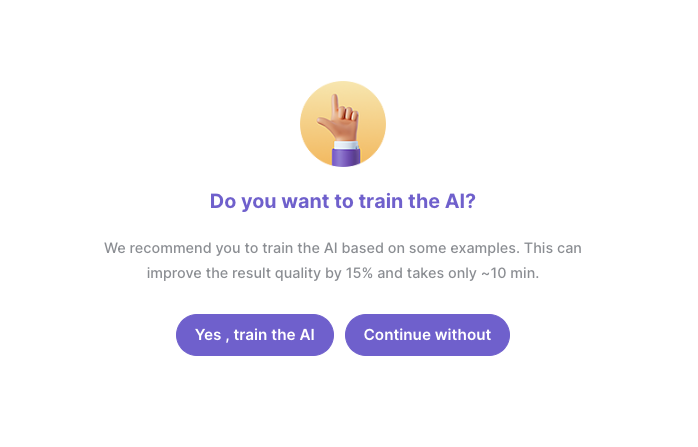
After your classifier setup is complete and you choose your Coda table, Bardeen will ask you to map your fields to Coda.
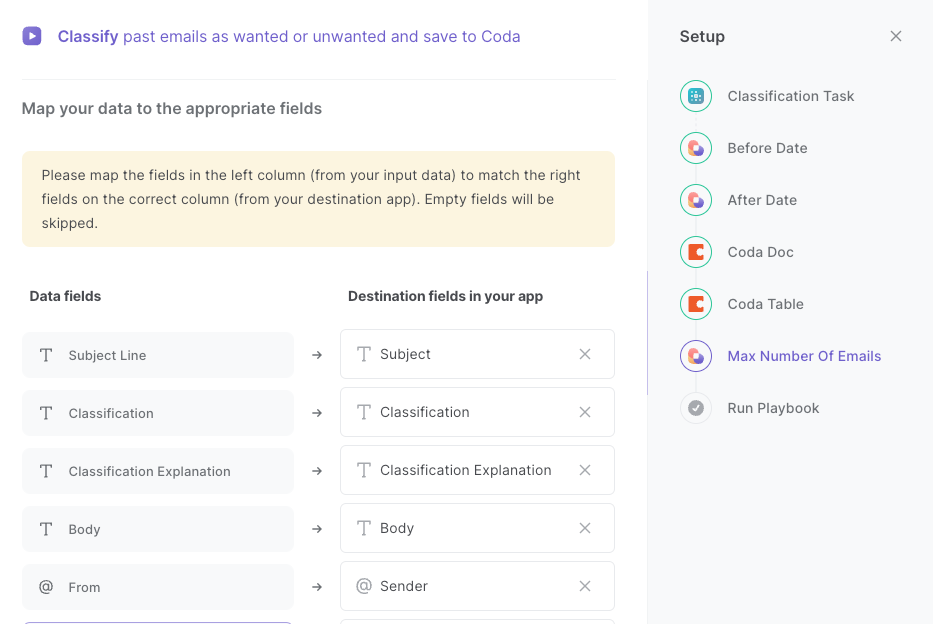
The left side consists of all the fields Bardeen will scrape for you. On the right side, specify the fields in Coda that you want to associate with the information on the left. If you don’t want a piece of information, leave that field empty, and it will be skipped. That’s it!
Click on “Save Input” and checkmark Coda. You can edit Inputs later by hovering over the playbook.
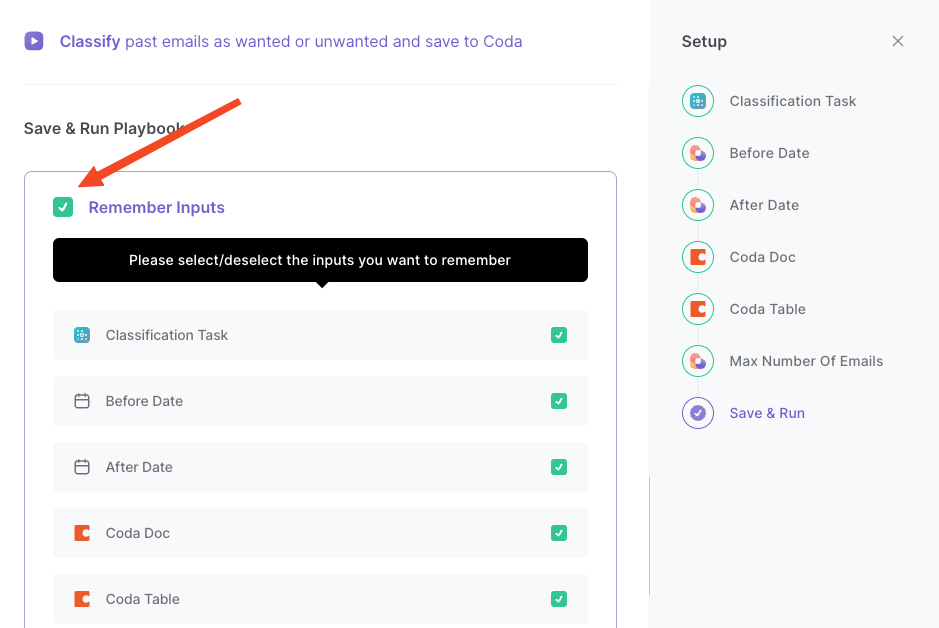
Step 3: Run the playbook to classify past emails and save to Coda
Press Option + B on Mac or ALT + B on PC on your keyboard to launch Bardeen. Click on the playbook card and run the playbook to classify your emails from a timeframe. It will go over every email for the timeframe, categorize them based on your classifier and save the results and classification to a Coda table.
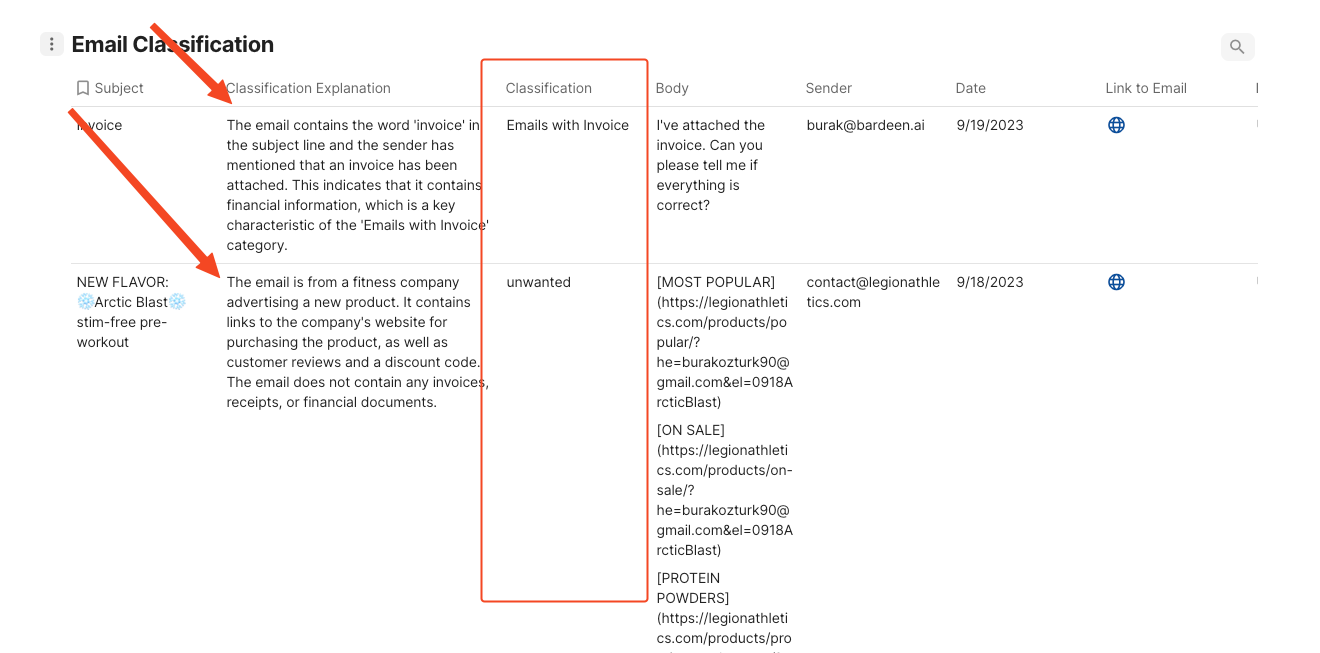
You can also edit the playbook and add your next action to further customize the automation.
Find more Gmail and Coda integrations.
You can also find more about how to increase your personal productivity.
Your proactive teammate — doing the busywork to save you time
.svg)
Integrate your apps and websites
Use data and events in one app to automate another. Bardeen supports an increasing library of powerful integrations.
.svg)
Perform tasks & actions
Bardeen completes tasks in apps and websites you use for work, so you don't have to - filling forms, sending messages, or even crafting detailed reports.
.svg)
Combine it all to create workflows
Workflows are a series of actions triggered by you or a change in a connected app. They automate repetitive tasks you normally perform manually - saving you time.
FAQs
You can create a Bardeen Playbook to scrape data from a website and then send that data as an email attachment.
Unfortunately, Bardeen is not able to download videos to your computer.
Exporting data (ex: scraped data or app data) from Bardeen to Google Sheets is possible with our action to “Add Rows to Google Sheets”.
There isn't a specific AI use case available for automatically recording and summarizing meetings at the moment
Please follow the following steps to edit an action in a Playbook or Autobook.
Cases like this require you to scrape the links to the sections and use the background scraper to get details from every section.








